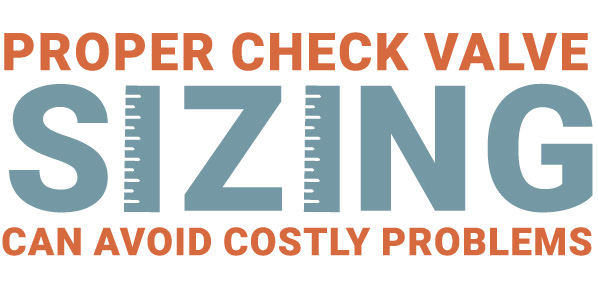Asset Utilization: The Key to a More Efficient Operation

Today’s competitive business climate requires leaner companies. Gone are the days of unlimited budgets and surplus staffing. Rather, every aspect of operation is scrutinized for ways to heighten efficiency and eliminate waste. Moreover, this scrutiny is relentless: its goal is continuous improvement, not only in production speeds and the bottom line, but also in product quality and customer service.
For Transportation and Logistics, this kind of efficiency analysis is especially crucial. Operations, maintenance, and fleet managers need a thorough understanding of how their assets are being utilized to find new ways to improve productivity and lower costs.
What, Exactly, is Asset Utilization?
Asset Utilization (AU) is a metric—a number—that helps managers figure out how to improve their bottom lines by making better use of their company’s assets. Depending on the type of company, assets might be any number of things—such as equipment, real estate, finances, and/or paid personnel.
An AU calculation is simple. For an entire company, the AU ratio is the total company annual revenue (for example, $500,000) divided by the total value of its assets (for example, $1,000,000). This percentage reflects how much “bang for the buck” a company receives from its resources. In this case, the company’s AU ratio is 0.50, or 50%. A metric like this can be used to follow a company’s progress over time—the obvious goal being to raise this percentage. Frequently, managers will look at the AU of separate business units or other functions within the company to better understand which parts are working efficiently and where changes need to be made.
Asset Utilization as Applied to Fleet Management
If AU is
Revenue
Asset Value
there are two ways to increase it: either increase the revenue or decrease the value of the assets.
How can a fleet manager increase a company’s revenue? There are several ways. The most obvious method is by cutting operating costs, such as by improving preventive maintenance practices, spending less time and money on repairs, or by decreasing inventory. The fleet might also generate revenue over time by improving customer satisfaction. Employee satisfaction affects revenue, too. Happy employees will deliver better customer service, perform better overall, waste less time, and be more likely to stay with the company. Employee retention means more experienced, efficient personnel who deliver better customer service. Better retention also decreases the amount of time wasted on hiring and training new employees.
As for the bottom half of the equation, a fleet’s asset value may be lowered in a number of ways, such as by maintaining fewer vehicles and by housing a smaller inventory of spare parts. Fewer vehicles will also require less real estate in which to house and repair them, as well as less insurance.
AU-improving modifications like these create tangible results, new efficiencies, and a positive ripple effect across many departments.
Surrendering the Fleet Means Losing Control of AU
Some companies outsource fleet management. Although allowing another entity to take over this responsibility may be convenient, it is likely deleterious to the bottom line. Once decisions regarding the fleet are being made out-of-house, there is no way to systematically improve performance or reduce waste. In short, a great opportunity to better the bottom line has been lost. Furthermore, if a vehicle breaks down, the outsourced company will fix it and charge accordingly—a poor incentive to improve performance. Even companies that do hire outside fleet management, though, might be advised to maintain a number of well-trained employees who can oversee the inventory and evaluate the outsourced service.
How Companies Are Applying Efficiency Analysis to Manage Their Fleets
To track fleet activities, many companies are applying new telematics-tracking and data-collection methods. These GPS-type systems can transmit or record anything from vehicle location to engine status to fuel use to driver behavior. Associated software can be used to organize the data for easy interpretation. Evaluation of such knowledge gained by monitoring fleet activity over several months often reveals trends that suggest solutions most likely to improve efficiency. A metric such as the number of days, miles, or engine hours between breakdowns can be useful for calculating efficiency and understanding how much downtime and repair work vehicles have been requiring over a given period. Careful examination of this data is the best way to learn what changes will make the most difference to asset utilization.
Vehicle Reliability is Key
One of the most cost-effective ways to increase fleet profitability is by eliminating the causes of lost efficiency. Increasing reliability, that is, decreasing time in the shop, of the vehicles on hand means both decreased assets, as fewer vehicles will be needed, and cost savings—both of which will help to raise the AU percentage. The chief way to achieve better reliability is through better preventive maintenance. Not only does this strategy decrease downtime, but better preventive maintenance also contributes to lower costs. Avoiding major repairs as much as possible diminishes the need for costly spare parts or entire unit replacements, lessens the number of mechanic hours expended, and decreases the time it takes to get the vehicle back on the road.
Acting on AU analysis can achieve impressive results. According to a July 2015 Government Fleet article, Bill Griffiths, division chief of Fleet Management Services for Montgomery County, Md., earned the General Motors-sponsored Fleet Manager of the Year award by implementing a comprehensive utilization plan. As a result of one of his strategies—ramping up training and preventive maintenance programs—downtime decreased 20%, technician productivity rose above 85%, and overall maintenance cost per mile decreased 8%. In another component of his plan, a focus on promoting safety reduced on-the-job, lost-time injuries by 33%.

Mechanic Skill Level has a Direct Effect on Reliability
Knowledge is crucial, and ensuring that employees have all the skills they need to perform effectively is paramount. Many U.S.-trained mechanics have already been certified through the Automotive Service Excellence (ASE) system. However, ASE testing doesn’t cover hydraulics, which is a key element for the utility industry. This proficiency gap poses a significant problem and results in excessive time in the shop, as people directly involved in fleet management well know.
“Over 44 years in the business, I’ve supervised multiple shops and professionally observed scores of technicians,” said the award-winning equipment manager for one of the largest U.S. state departments of transportation. “The typical technician, usually hired from a car or truck dealership, has no clue about hydraulics. All they can do is guess wrong components one after the other, replacing each until they find the part that is damaged. And maybe they could have fixed the entire problem by adjusting a valve somewhere.”
Joey Clemmons, CFPAI, CFPIHM, CFPS, a former fluid power component company salesman who saw an opportunity to fill a niche as an independent fluid power instructor, agrees. “There is a void in the educational realm,” he said. “Unless they have a Mechanical Engineering degree, guys don’t even know the symbols used to describe the circuits in hydraulics. They can’t figure out how the machine works, let alone how to fix it. For instance,” he said, echoing the equipment manager, “someone who doesn’t know any better might opt to replace a malfunctioning pump, where an IFPS-certified mechanic might simply fix it by adjusting a release valve.”
IFPS as the Hydraulics Equivalent to ASE
Clemmons considers the nationally recognized International Fluid Power Society (IFPS) certification equivalent to ASE mechanic certification. So does the director of fleet services at a major telecommunications company, who says, “IFPS is the fluid power equivalent to ASE from the standpoint of safety in both using and repairing hydraulics equipment and of improving asset availability by fixing it right the first time, making it safe and getting it back out on the road.” He adds, “Hydraulically driven equipment comes with a lot of liability. I drive home the safety culture: you’re not just fixing a switch; you’re responsible for somebody’s life, maybe.”
But why does the subject of hydraulics require its own test? “Most non-technical people think hydraulics is as simple as the water pipes in your house. They don’t understand the complexity of modern hydraulic systems,” the equipment manager explains. “In my state’s DOT, a handful of techs assigned to an area have to be able to service hundreds of different brands and types of equipment, from snow blowers to complex dirt-moving machinery. These techs have to be really good at what they do. For instance, an excavator is a very sophisticated piece of hydraulic equipment with thousands of pieces and wiring that looks like spaghetti. Mechanics need to know how to diagnose—insert flow meters and pressure gauges into the system to see where the problem is; they need to understand open, closed, and hydrostatic systems.” One way of ensuring that technicians are truly competent in hydraulics is via certification and training with the help of the IFPS.
Properly Trained Mechanics Lower Cost and Reduce Liability
While certification and training are not free, in the case of hydraulics, the return on investment (ROI) is seen as significant. “As a manager,” says the telecommunications fleet director, “one of your tools for achieving peak performance is empowering the people who work for you. The payoff of IFPS certification is in repair cycle times—techs come to understand the schematics, the symbology, how the equipment works. Over 6-8 months, we began to see a turnaround as we adopted this in more facilities. I’ve saved millions of dollars by having my people trained and certified.”
Less equipment downtime and a drastic decrease in parts and replacement expenditures through better preventive maintenance and effective troubleshooting are the primary benefits of improving technician skill levels in hydraulics. “It’s hard to precisely measure the ROI of training and certification because there are too many variables—the age of the equipment, weather conditions, etc.,” says the DOT equipment manager. “But I guarantee, not having technicians who understand hydraulics wastes a ton of time and money.”
Beyond saving time and money, efficient problem solving, greater skill, and proper maintenance also result in safer operation. Prompt, high-quality repairs and the right preventive maintenance at the right time can prevent damage to equipment and unsafe conditions that may result in injury days lost and higher liability costs.
Mark Perry, CFPHS, sales manager at Fitzsimmons Hydraulics, says, “Passing an IFPS test turns a light on, that there is a proper way to do things. It makes employees think safer and more productively.” Perry believes hydraulics certification is a great separator. “Trained employees know what to look for if a machine goes down, troubleshoot fast, and have it back up and running right away. They do it right the first time because they understand the logic—how the machine is supposed to work.” He feels that properly trained employees promote efficient operations. “When managers complain about increasing costs,” Perry says, “the audit invariably trails back to a lack of training, leading to excess expenditures.”
Beyond implied reliability and safety, well-maintained vehicles are more environmentally friendly. This can mean savings from greater fuel efficiency and also better customer satisfaction due to cleaner emissions, less leakage of hazardous fluids, and so on.
Effective Testing and Certification Help Ensure Mechanic Competence—and Retention
Managers who want to raise the skills of their mechanics can avail themselves of specific testing and certification programs, such as those offered by the IFPS. One reason IFPS certification is so well respected is that the actual tests are extremely well crafted. “Training’s not enough; you need to make sure the learning happened,” says the DOT equipment manager. “IFPS exams include both written and hands-on practical, timed assessments. You can be sure an IFPS-certified tech really does know the material.”
Jon Jensen, CFPAI, CFPECS,CFPPS, is energy conservation group manager at SMC Corporation of America. SMC, a Japanese pneumatic technology company, required fluid power certification for all its technicians, and Jensen had to make it happen. “IFPS was really the only game in town,” he says. The test was harder than expected. “They really do their due diligence to provide quality assessment tools based on industry best practices, vetted by subject matter experts and validated by testing experts. This certification indicates a significant level of competence, and after passing it, employees seem to have a sense of accomplishment and feel more empowered and confident in their work.”
This kind of positive employee response to IFPS testing and training is typical. People who go through certification experience better job satisfaction because they take pride in knowing they are capable of doing excellent work. They also understand that by adding skills, they are making themselves more attractive in the job market. Even so, these employees are more likely to stay because they feel valued by their company, especially with the prospect of going back and obtaining even higher levels of certification.
AU for Fleet Means Upgrading Reliability—and Better-Trained Mechanics Often Make the Difference
Implementing as asset utilization program means making gradual improvements over time with the goal of having a fleet operate as close to maximum capacity as possible, every day. For fleet managers, this essentially means maximizing reliability. An important way to do this is by making sure mechanics have all the skills they need. One skill set often lacking is hydraulics repair. Upgrades in hydraulics training and certification can make a significant impact on fleet Asset Utilization and hence, profitability.








good post.